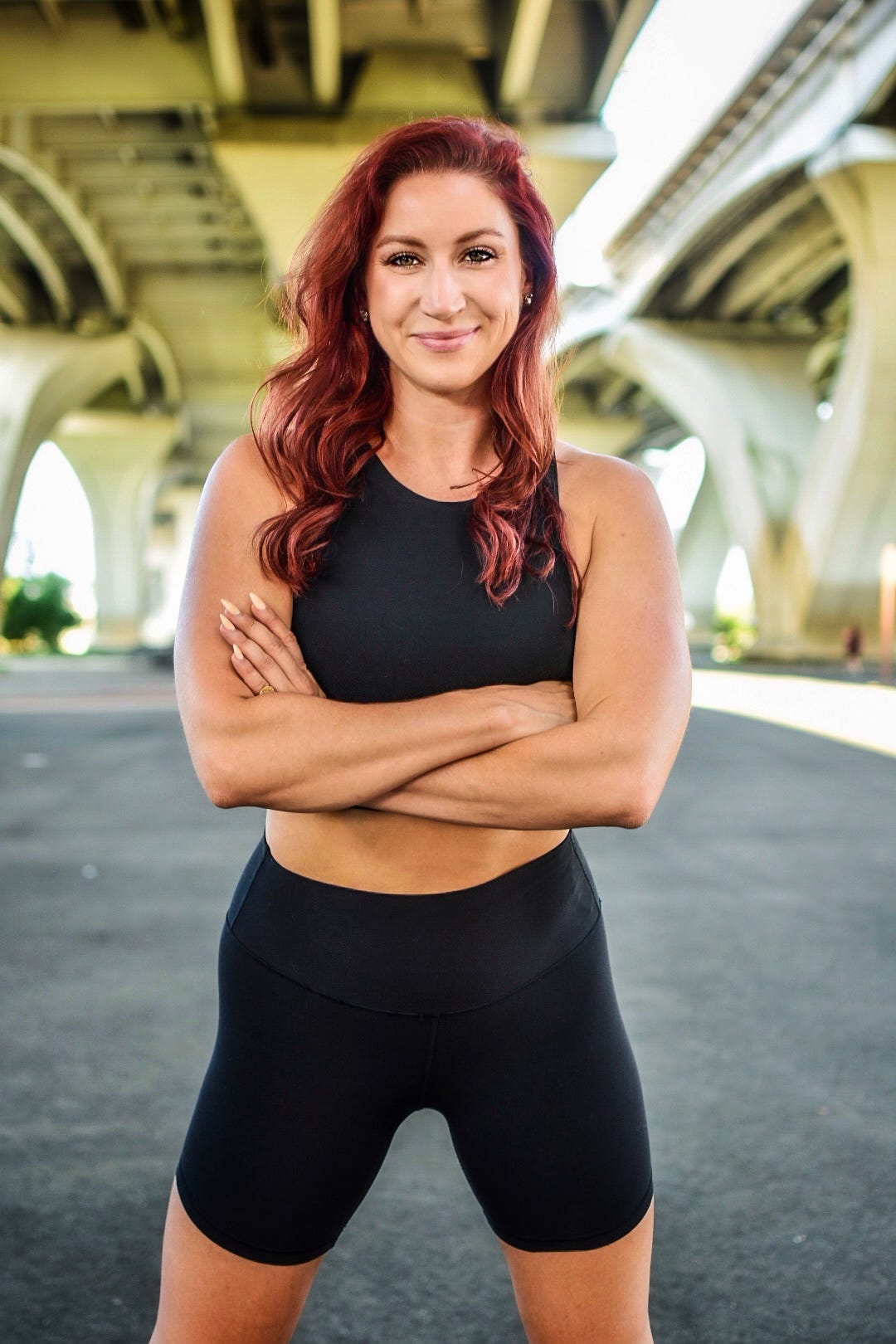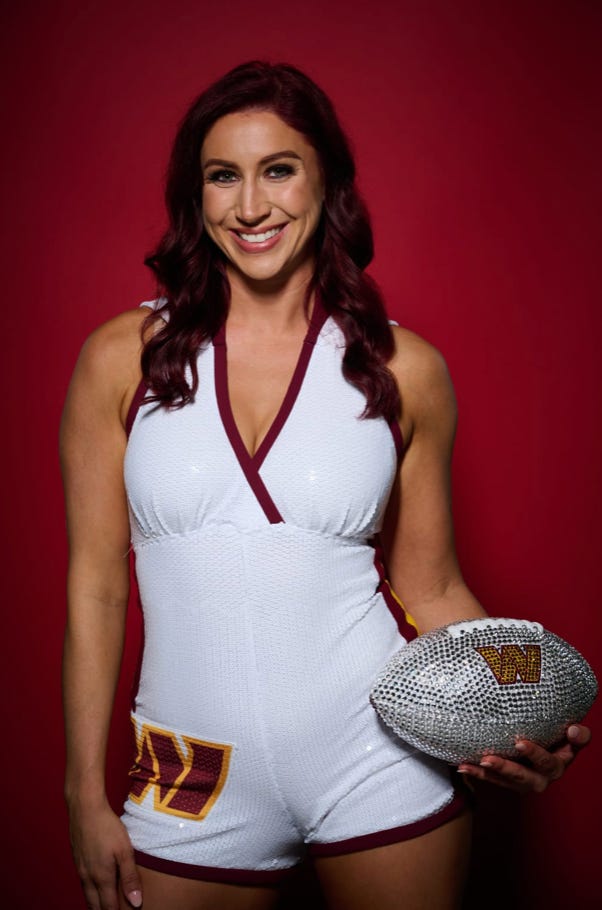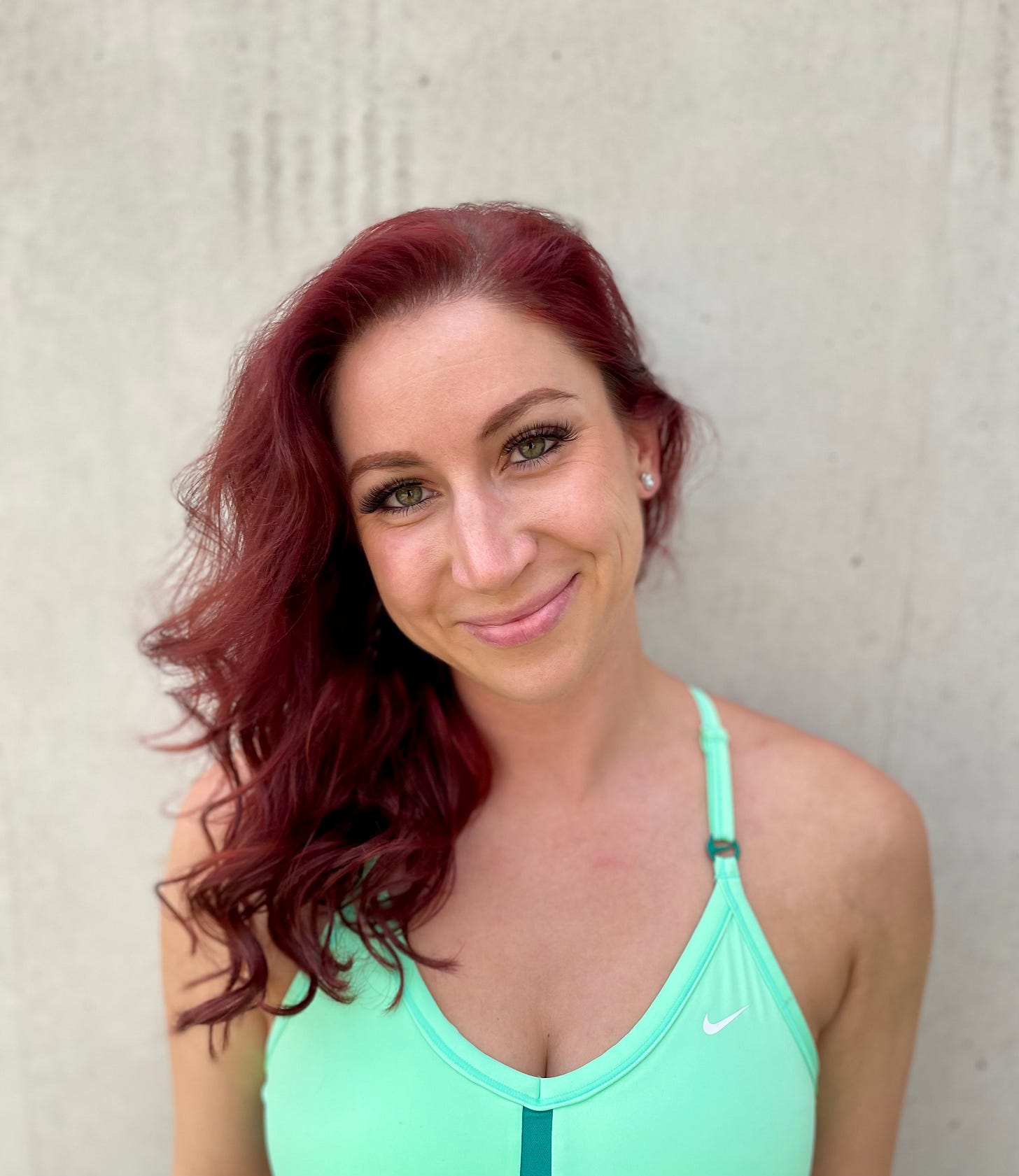Meet Ally Miller! Nutritional Therapy Practitioner and former NFL dancer for the Washington Commanders!
Ally Miller is a Nutritional Therapy Practitioner and her nutrition coaching business, Eating With Al, is dedicated to helping dancers feel their best and fuel like athletes.
For this week’s edition of MTP we are exclusively featuring…
Ally Miller
Ally Miller is a Nutritional Therapy Practitioner and her nutrition coaching business, Eating With Al, is dedicated to helping dancers feel their best and fuel like athletes. She is also a former NFL dancer for the Washington Commanders.
1. Tell us all about Ally! What has your journey in the world of dance looked like up to now? What originally inspired you to pursue an education / career path in nutrition, focused specifically on helping dancers?
My dance journey
I started dancing when I was 4 and grew up dancing competitively with a team in high school. I went to Penn State and auditioned for their dance team, but actually got cut in the first round. Fortunately, I joined a hip hop dance club instead and realized how much I LOVED hip hop. So that’s kinda been my main thing ever since, I feel most confident doing hip hop.
I took about a 5 year hiatus from dance after college, and didn’t get back into it until I was 27 when I decided to start auditioning for pro teams. I lived in DC at the time, so I auditioned for the Washington Wizards twice, Washington Redskins once, and then when Redskins rebranded to Commanders and became a more hip-hop team, I ended up making it for the 2021–2022 season.
My nutrition journey
I’ve always been into health and nutrition for personal reasons, because growing up I had really bad digestive issues. I personally have experienced just how powerful food can be when you’re not feeling your best. Also, more and more people these days want to be preventive about their health and take care of their bodies. I just love helping people feel their best through food.
At the beginning of COVID lockdown, I had a lot of free time so I became a Nutritional Therapy Practitioner and then started working with clients. Then, a year ago, I decided to niche down and work exclusively with dancers because 1) I relate to them the most and 2) there is a HUGE need in the dance world for better education and empowerment when it comes to nutrition and health.
2. Let's dive deeper into the topic of body image and body dysmorphia in dance. What is your experience with it, what is your opinion on it, and how would you like to implement change regarding this issue within the dance world?
My experience:
As a kid, I always felt like the largest person on my dance team. I was super tall, wore size large costumes (everyone else was small), and had big boobs. But by any normal account, I had a very average sized body, I looked like 90% of teenage girls. However, in the dance world, I looked like 10% of dancers because I wasn’t super thin.
In my late twenties during my journey to go pro, I struggled HARD with body image, body dysmorphia, and disordered eating. Because I had been cut from finals 3 times, and because I’d received feedback about “toning” and “working on my midsection,” I truly believed I simply did not and would not have the “pro dance body.”
I feel very fortunate that on Commanders, weight or having an extremely flat stomach wasn’t majorly important. The Commanders have a pretty diverse team, and I’m super proud of that. They mainly cared that we were athletic and had strong endurance and performance. We didn’t have weigh-ins. I always felt like the emphasis was on how well we were dancing, performing, and entertaining. I never felt a lot of pressure to be really thin or maintain a certain number on the scale. So that definitely helped me navigate body image and body dysmorphia better.
My opinion:
My personal opinion is that the way a dancer's body looks does not and should not determine their ability to be a great dancer and performer. We dance because we love to do it. We dance because we want to perform and make people feel something. Most people in the audience aren’t watching a performance and only watching the skinny dancers because they’re skinny. The audience is watching whoever is most captivating and makes them feel excited, regardless of size or body type.
I have seen firsthand with so many of my clients, and my dance friends, just how damaging body image issues and disordered eating can be to dancers’ mental/emotional health AND physical health. Under-eating is a very real problem and it is ubiquitous in the dance world.
I realize the pro dance/pro cheer world is an entertainment industry first and foremost, and I understand that there are certain expectations that come with the job. However, I think if you look beyond the pro dance/pro cheer world, and look at the dance industry as a whole (for example, LA and NYC come to mind), the dance industry is more aligned with society overall in the sense that it is slowly becoming more body positive, diverse, and inclusive. I think the pro dance/pro cheer world has become more diverse in terms of gender and race/ethnicity, but not as much in terms of body type. But my hope is we start to see a shift there as well.
How to implement change:
I think this has to come from a few angles.
It has to come from dancers themselves. First and foremost, dancers need to recognize and understand and truly believe that the level of activity they’re doing–especially dancers at the professional and/or competitive level–is comparable to that of other athletes in other sports. Non-dancers don’t realize just how physically demanding dancing is. And I think in a way, dancers tend to gaslight themselves and undervalue their athletic performance, the physical demands on their bodies, and their energy (read: calorie) needs.
It has to come from dance coaches, instructors, mentors, choreographers. I think it is so important that leaders in the dance world shift the focus away from how dancers’ bodies look and more towards how dancers’ bodies perform. Dancers are being asked to be more athletic than ever before, and our coaches and instructors need to acknowledge this and play an active role in making sure dancers are fueled properly and taking care of their bodies.
It’s SO important that we change the game around food and nutrition in the dance world. Dancers are 5x more likely to develop eating disorders than the general population, and most dancers are significantly under-eating for many, many years, totally unaware of how that can seriously damage their health long term. In my nutrition practice I see things like digestive issues, hypothyroidism, hormonal/sexual health issues, sleep/energy problems, and metabolic dysfunction all the time. Dancers don’t realize that a lot of chronic health concerns are rooted in years of under-eating, years of not getting adequate nutrients and calories for their bodies to function optimally.
3. What can we find when visiting your eatingwith.al Instagram page and what can someone expect when working with you?
My main goal with my Instagram page is to educate and empower dancers. I seek to remove confusion around food and dieting, because there is so much conflicting information out there, mainly thanks to diet culture. I try to reframe the way dancers look at food: less fear and restriction, more understanding and fueling.
My 1-on-1 client work is similar, and on top of that I focus heavily on the actual health of the dancer. We go far beyond just “what to eat and how much.” We’re going to make sure digestion is working optimally, that blood sugar is balanced and we have a ton of energy, that our hormones are happy, that hydration status is great, that we’re recovering well and avoiding injuries, and that we’re getting plenty of vitamins and minerals from nourishing foods.
I strive to mentor all my clients and teach them how to confidently make decisions based on their unique bodies and needs.
4. Tell us about your time as an NFL cheerleader. Is this something you always dreamed about accomplishing? What has been the most fulfilling / rewarding part about this chapter in your life?
I actually always envisioned dancing in the NBA, and the thought of the NFL had never crossed my mind. But, after auditioning for the Washington Wizards twice and not making it, I decided to switch it up and try NFL. I’m really glad I did, because I truly feel like the team I ended up joining was meant for me.
The most rewarding part was the confidence it instilled in me. For so long I believed I wasn’t a good enough dancer to ever make it. But once I finally did, and I had the opportunity to perform at games in front of thousands of fans, it was like a switch flipped. I became the most confident version of myself thanks to my teammates, my coaches, and the amazing choreographers I got to work with. And I’ve now carried that confidence into all other aspects of my life, especially my nutrition business.
5. If you could give a piece of advice to younger Ally or other young dancers today - what would you tell her/them?
Figure out exactly who you are–as a person and as a dancer–and own it. Unapologetically own it. I spent far too long trying to be like other people and dance like other people and fit a mold that I thought I needed to fit. But I never felt confident doing that. The most authentic, genuine version of you is always going to be the most confident version of you.
Tell us how we can keep up with you / the resources you offer! (Instagram handle, email, links, etc.)
You can follow me on IG and TikTok @ eatingwith.al
Also check out my website
– I occasionally share some blog posts! And I also have a weekly email newsletter where I share an in-depth nutrition topic, a recipe, and fun dance video. You can subscribe on my website homepage!
And I am always taking on new clients! I offer monthly 1-on-1 coaching, as well as what I call “one time strategy sessions” where I help clients develop a nutrition plan that they can follow on their own to achieve their goals. Those interested can DM me or inquire here 🙂
HUGE thank you to Ally for taking time out of her schedule to share with us! WOW… I am truly speechless and honored to have this opportunity to share her words of wisdom and resources. I hope you feel inspired after reading this interview and that you’re not alone with the struggles that aren’t usually addressed in our world of dance team.











